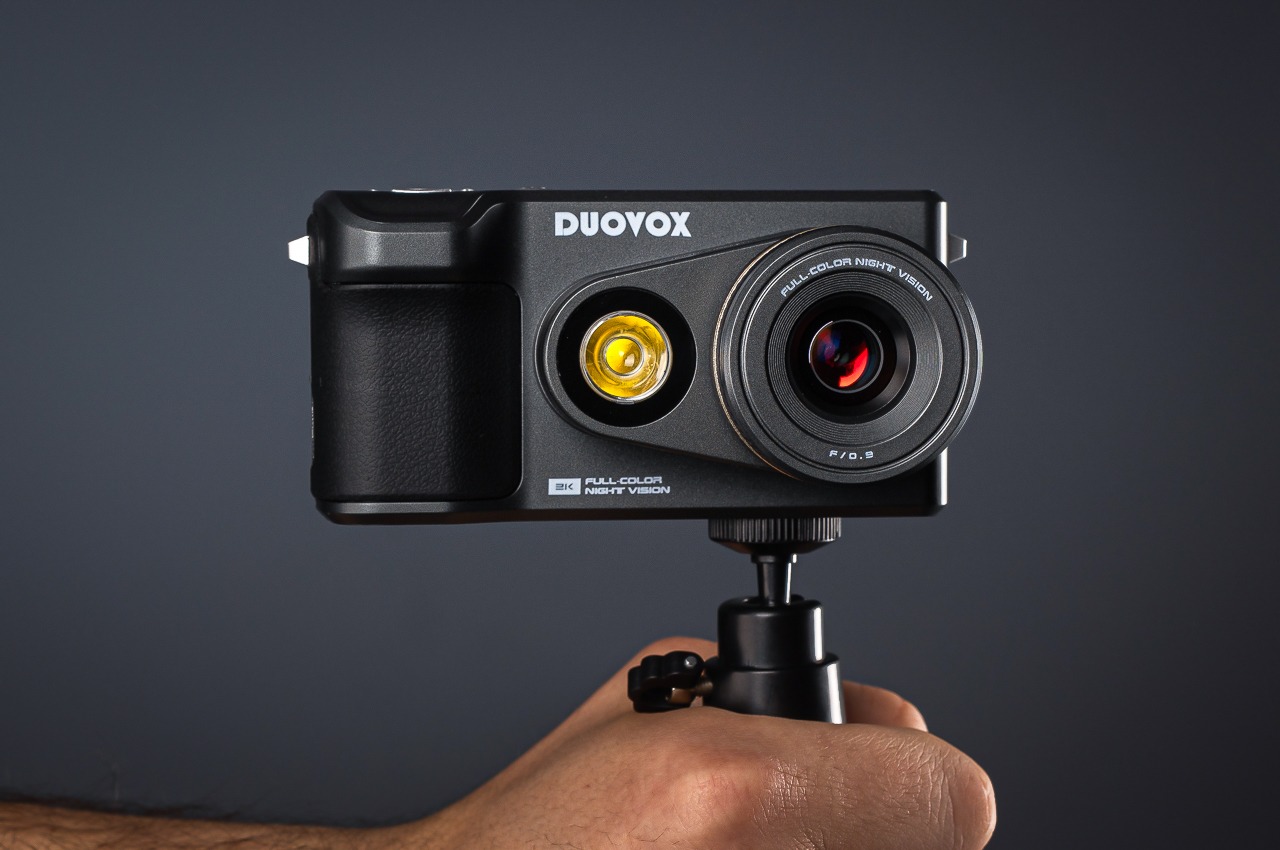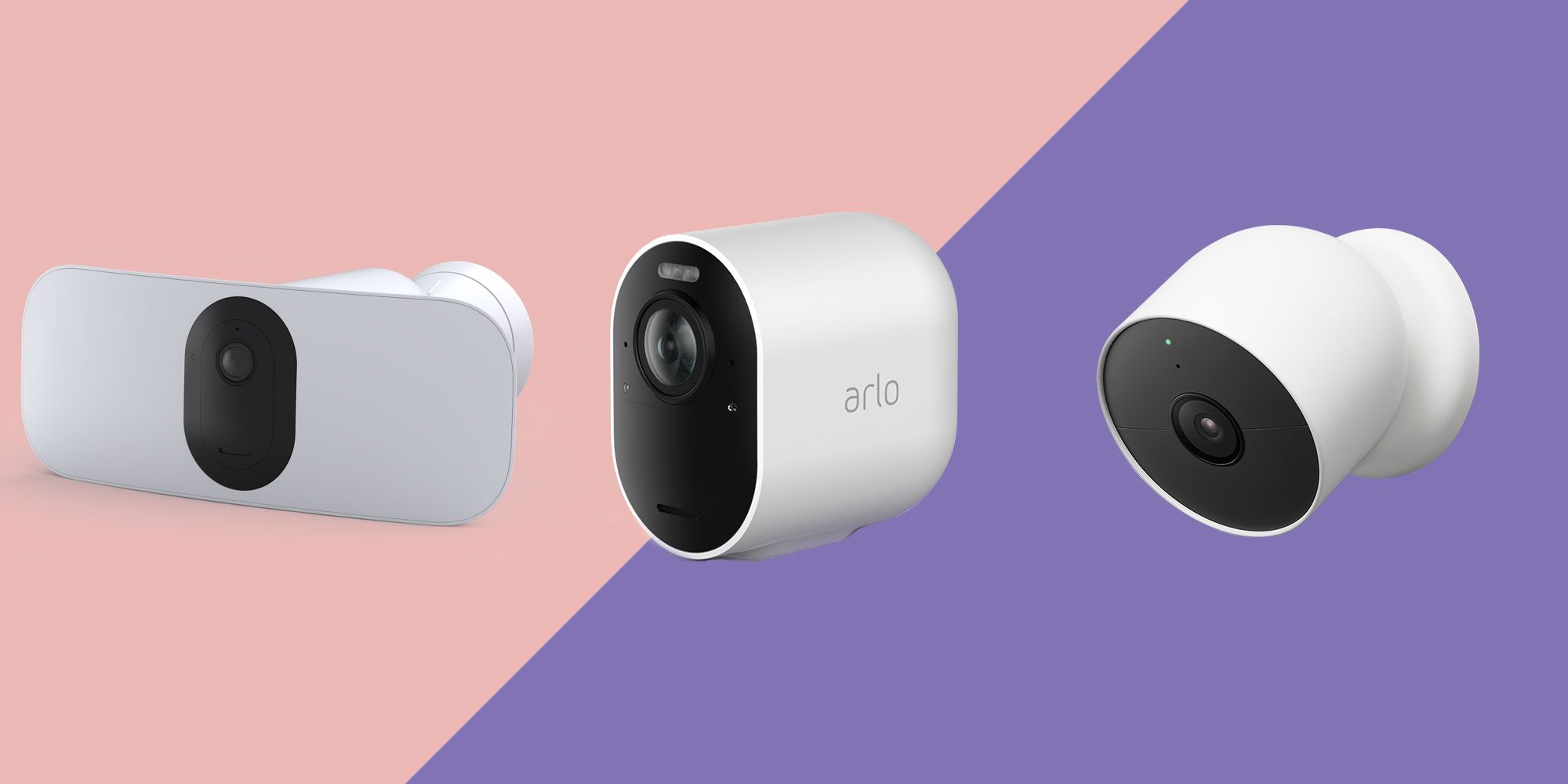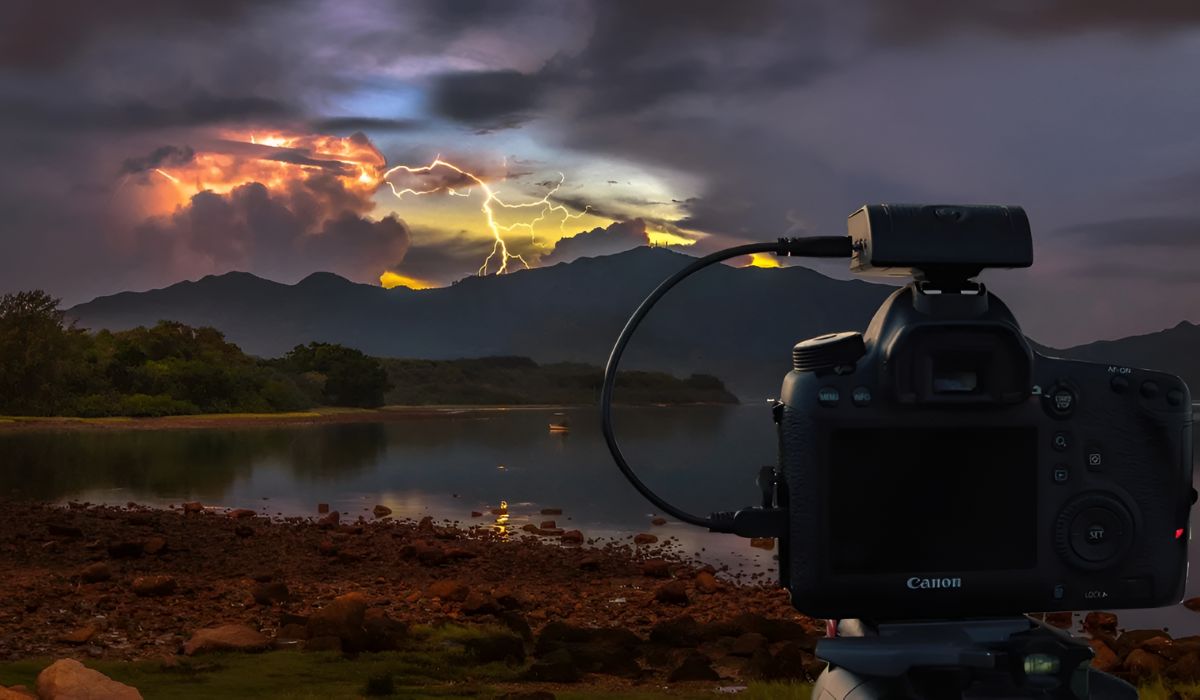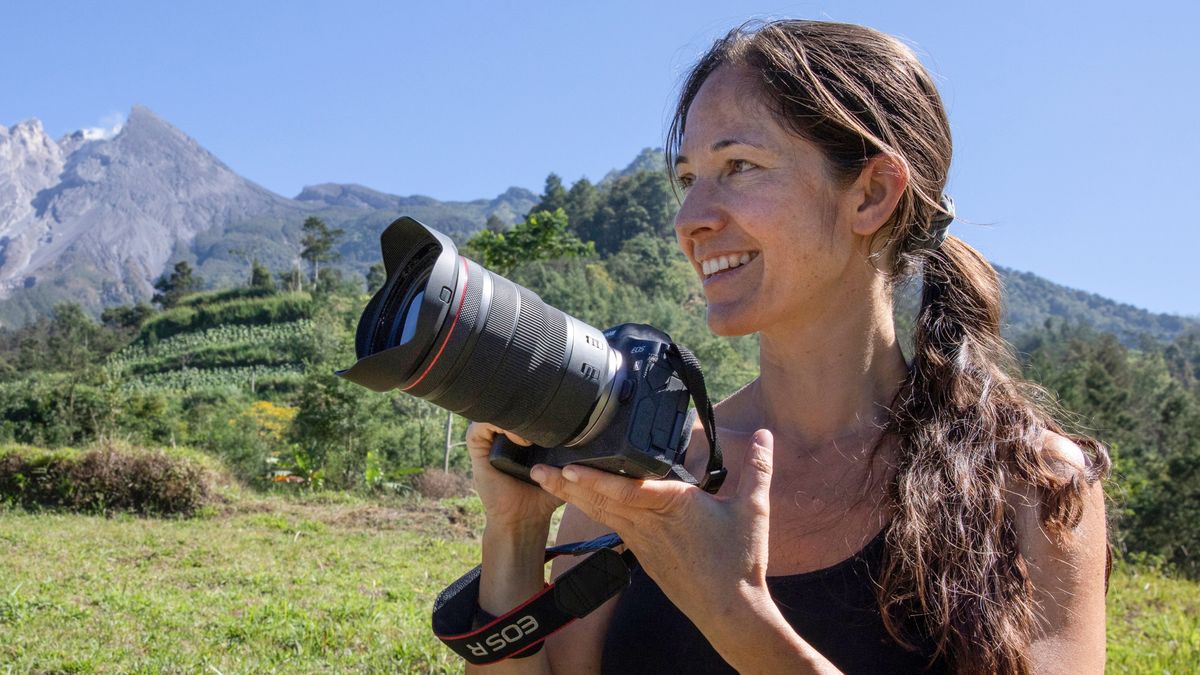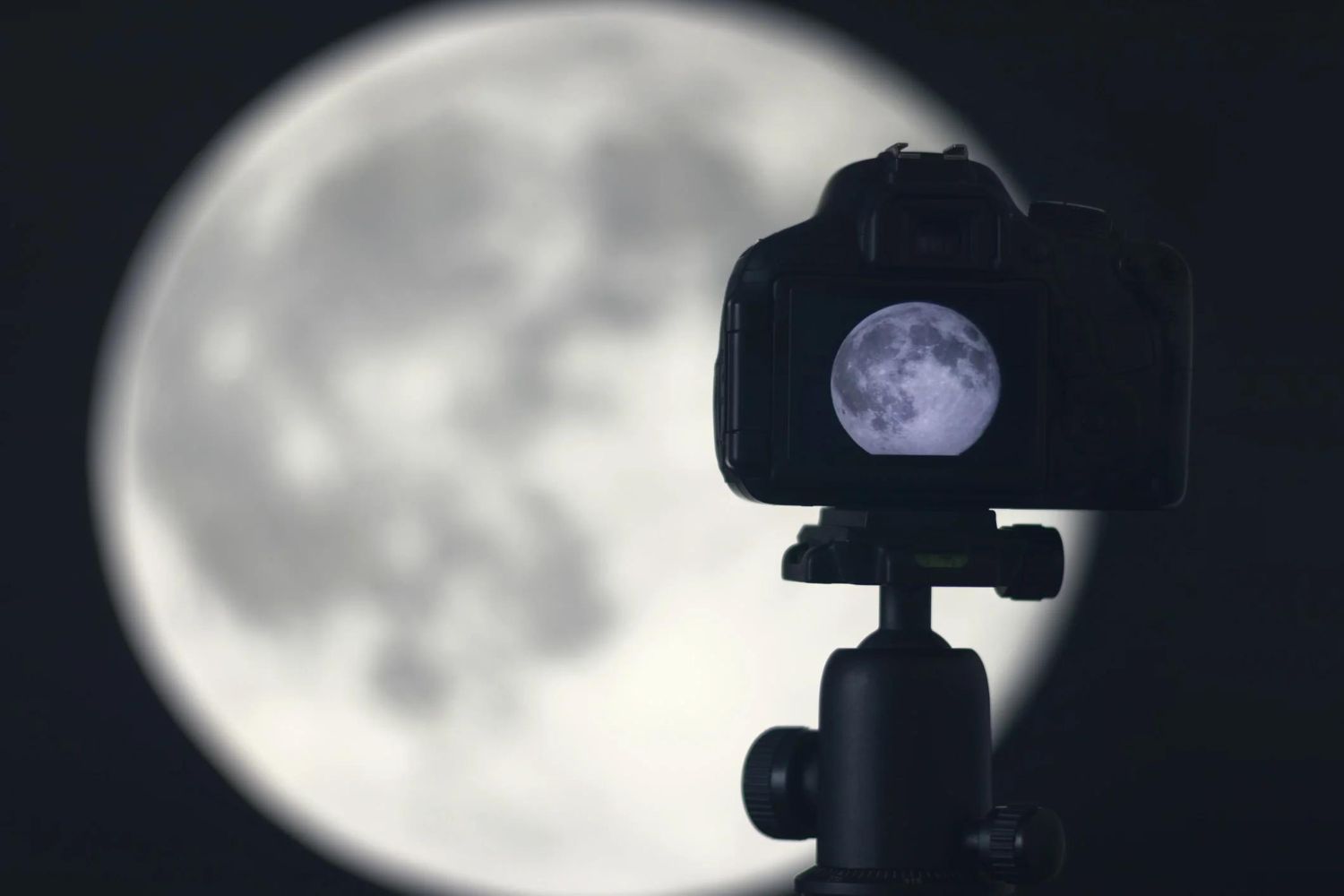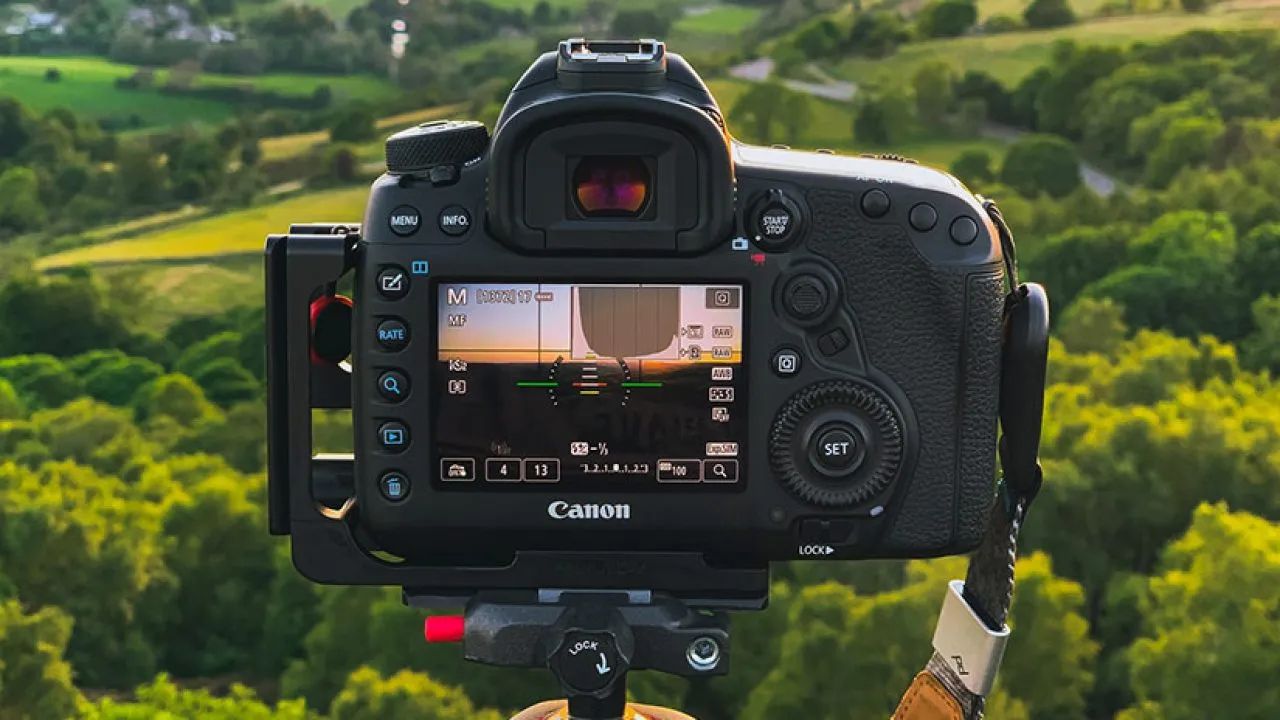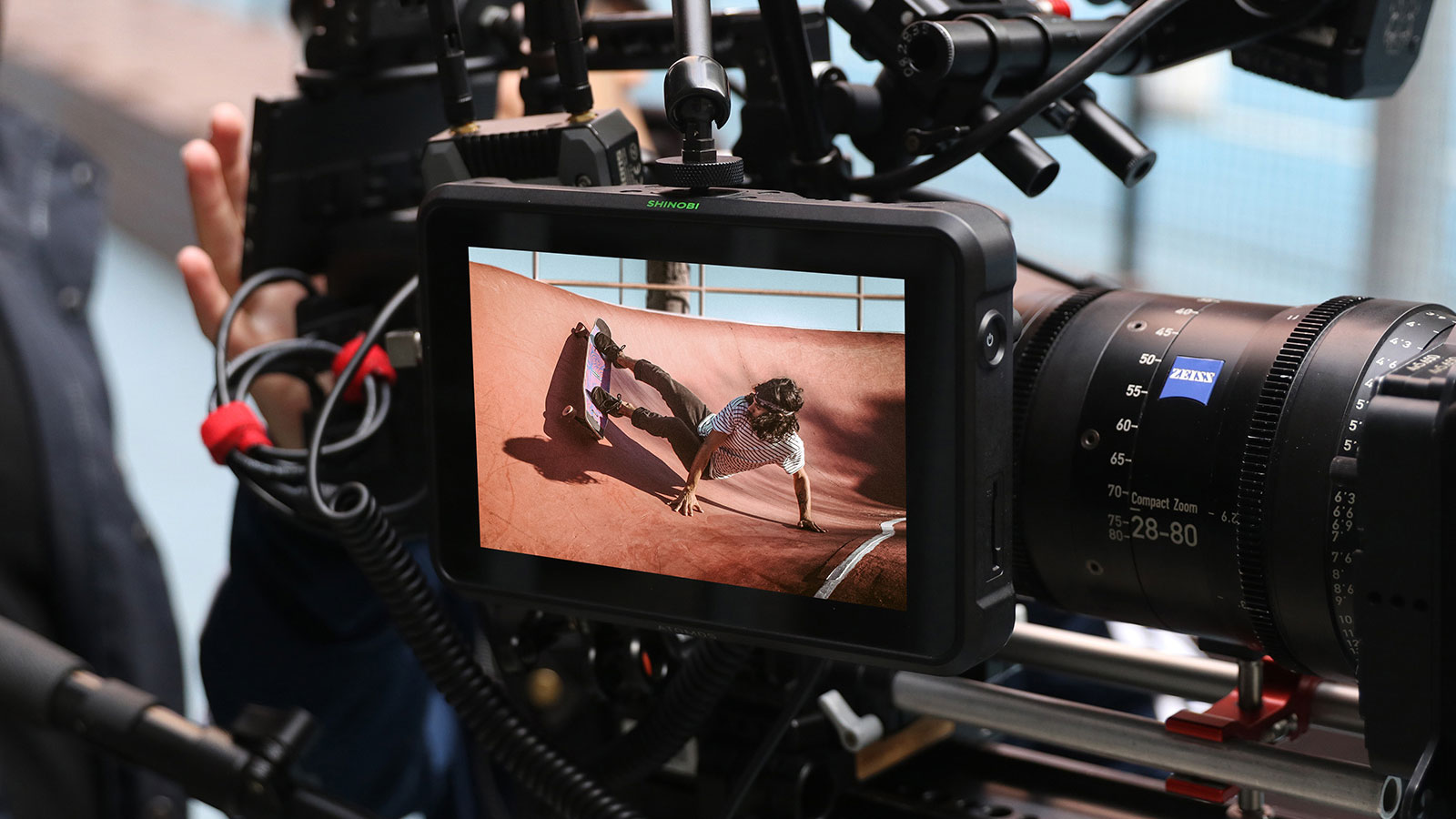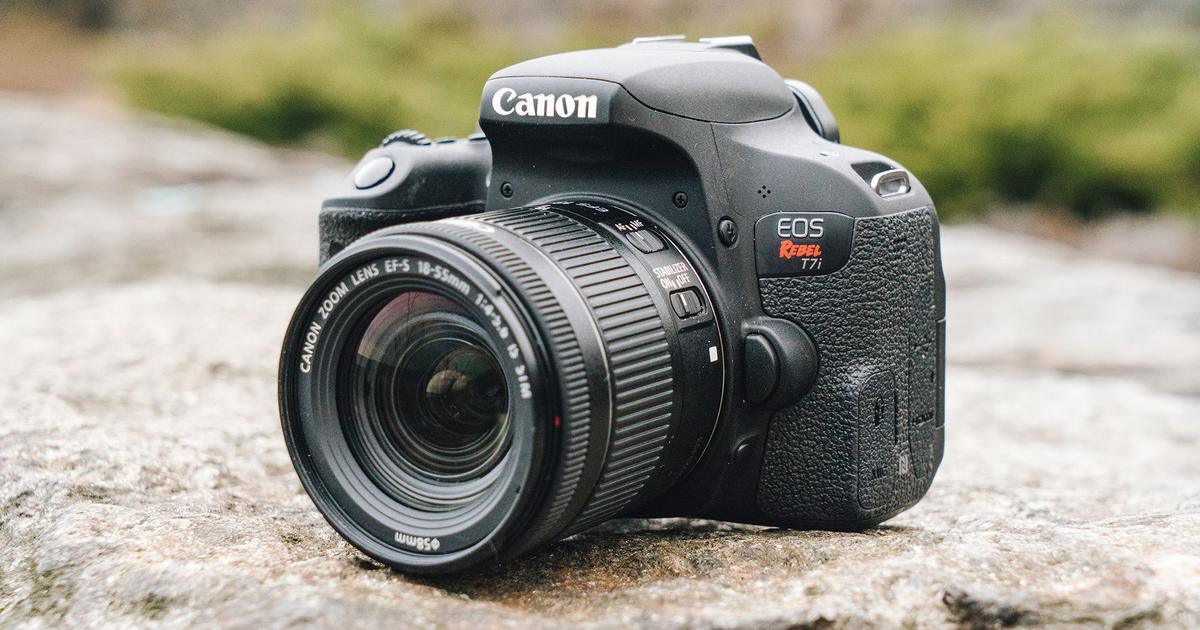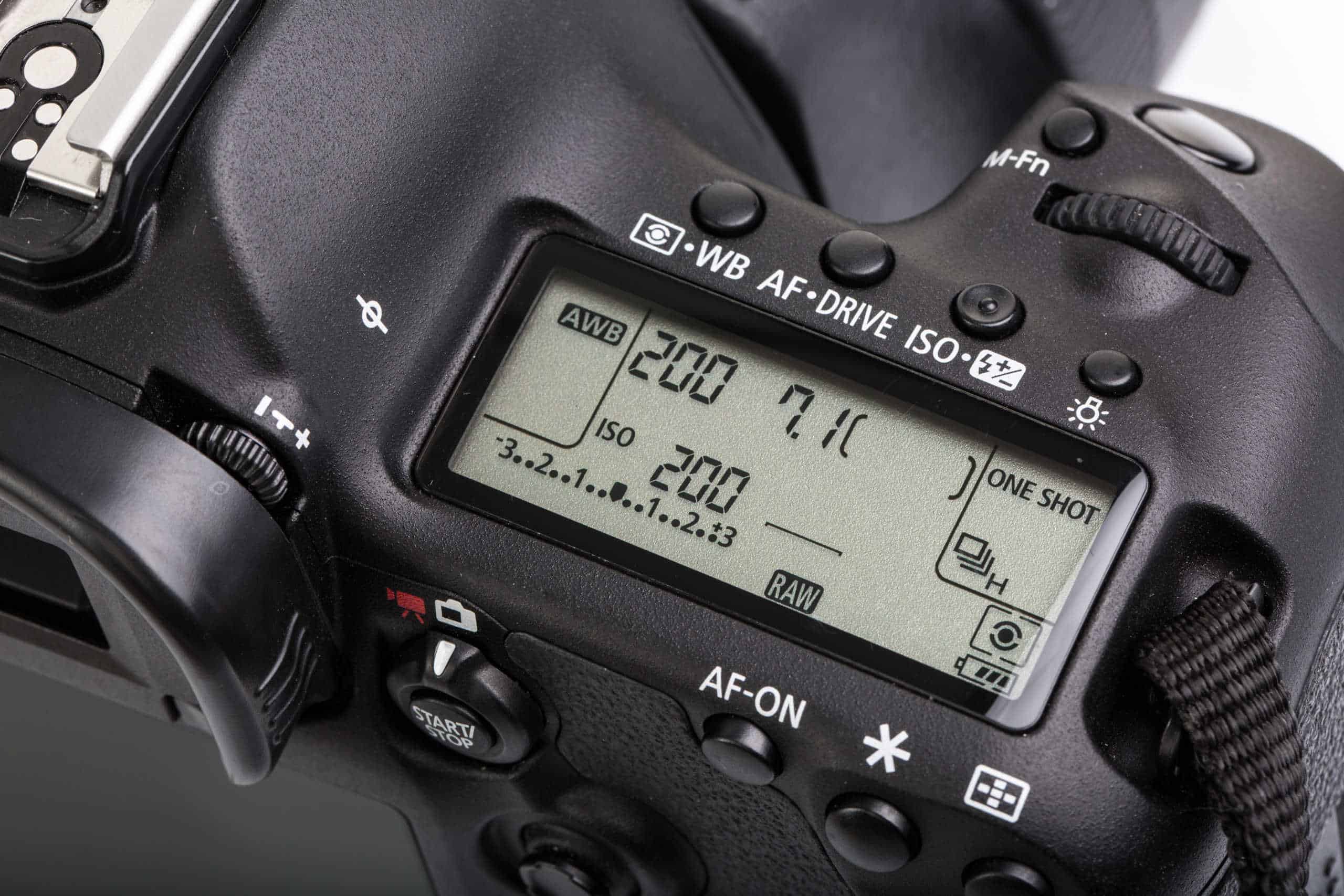Introduction
Welcome to the fascinating world of night vision photography with your DSLR camera. Capturing stunning images in low light conditions can be a rewarding and awe-inspiring experience, and with the right techniques and equipment, you can elevate your photography to new heights. Whether you’re an amateur photographer or a seasoned professional, mastering the art of night vision photography can open up a whole new realm of creative possibilities.
From capturing the twinkling city lights at dusk to immortalizing the serene beauty of a starry night sky, night vision photography allows you to showcase the world in a completely different light. With the advancements in camera technology and the availability of specialized accessories, achieving remarkable results in low light environments is within reach for any DSLR camera enthusiast.
This comprehensive guide will walk you through the essential steps to achieve exceptional night vision photography with your DSLR camera. You’ll gain insights into understanding night vision, selecting the right equipment, adjusting camera settings, utilizing additional accessories, and receiving valuable tips for shooting in low light conditions. By the end of this guide, you’ll be well-equipped to embark on your nocturnal photography adventures with confidence and creativity.
Understanding Night Vision
Before delving into the technical aspects of capturing night vision photography with your DSLR camera, it’s crucial to grasp the fundamental principles that govern low light imaging. Night vision photography involves harnessing the available ambient light to produce compelling images in environments with minimal illumination. Understanding the behavior of light in these conditions is essential for achieving remarkable results.
When the sun sets and natural light diminishes, artificial light sources such as street lamps, neon signs, and moonlight become the primary illuminating factors for night vision photography. The interplay between these light sources, the surrounding environment, and your camera’s sensor sensitivity dictates the outcome of your photographs. Mastering the art of utilizing available light to your advantage is pivotal in capturing captivating night vision images.
Moreover, comprehending the impact of long exposure times on image quality is imperative. While longer exposures can amplify the available light and unveil intricate details in low light scenes, they also pose challenges such as increased susceptibility to camera shake and motion blur. Balancing exposure times with stable camera support or tripod usage is a critical aspect of night vision photography.
Additionally, understanding the behavior of your camera’s sensor in low light conditions is essential. Different DSLR models exhibit varying levels of noise and sensitivity in low light environments, necessitating a tailored approach to optimize image quality. Familiarizing yourself with your camera’s low light performance and noise reduction capabilities empowers you to make informed decisions when capturing night vision images.
By comprehending the dynamics of available light, exposure times, and your camera’s sensor behavior, you’ll be equipped with the foundational knowledge to embark on your night vision photography journey. This understanding forms the bedrock upon which you can build your expertise in capturing mesmerizing images in low light conditions with your DSLR camera.
Choosing the Right Equipment
Equipping yourself with the appropriate gear is pivotal in realizing your vision for night photography with a DSLR camera. Selecting the right equipment tailored to low light conditions can significantly enhance the quality and versatility of your images. From the camera body to specialized lenses and essential accessories, each component plays a crucial role in optimizing your night vision photography experience.
First and foremost, the choice of a DSLR camera body with exceptional low light performance is paramount. Look for models with larger sensor sizes, advanced noise reduction capabilities, and extended ISO ranges to ensure superior image quality in dimly lit environments. Cameras with effective low light performance empower you to capture sharp, noise-free images with enhanced details, even in challenging lighting conditions.
When it comes to lenses, investing in fast prime lenses with wide apertures is a game-changer for night vision photography. Prime lenses with wide apertures such as f/1.8 or wider enable greater light gathering capability, facilitating faster shutter speeds and reduced ISO settings while maintaining optimal image quality. These lenses excel in capturing stunning nightscapes, celestial bodies, and low light portraits with remarkable clarity and depth.
Furthermore, incorporating essential accessories such as a sturdy tripod is indispensable for achieving steady, blur-free shots in low light scenarios. A reliable tripod provides stability and precision, allowing you to leverage longer exposure times without compromising image sharpness. Additionally, remote shutter releases or intervalometers can aid in minimizing camera shake during long exposures, further refining the quality of your night vision images.
Considering the significance of lighting in night vision photography, investing in external lighting sources such as portable LED panels or speedlights can broaden your creative possibilities. These lighting tools enable you to selectively illuminate subjects, add dramatic effects, or enhance ambient light, elevating the visual impact of your nocturnal compositions.
By carefully selecting a DSLR camera with exceptional low light capabilities, pairing it with fast prime lenses, and integrating essential accessories, you can assemble a formidable arsenal for conquering the challenges of night vision photography. The right equipment not only empowers you to overcome the limitations of low light environments but also unlocks a realm of artistic expression and photographic ingenuity.
Adjusting Camera Settings
Mastering the art of adjusting your DSLR camera settings for night vision photography is essential for capturing stunning images in low light conditions. By harnessing the capabilities of your camera’s features and making strategic adjustments, you can optimize exposure, focus, and image quality, ultimately bringing your nocturnal compositions to life.
One of the key settings to focus on is the ISO, which determines your camera sensor’s sensitivity to light. In low light environments, increasing the ISO setting allows for better exposure without excessively long shutter speeds. However, it’s crucial to strike a balance, as higher ISO settings can introduce digital noise, impacting image clarity. Experimenting with varying ISO levels and understanding your camera’s noise performance in low light conditions is essential for achieving optimal results.
Another critical setting is the aperture, which regulates the amount of light entering the camera through the lens. Opting for wider apertures (lower f-stop values) not only facilitates faster shutter speeds but also enables captivating depth of field effects, particularly in night portraits and astrophotography. Understanding the interplay between aperture, shutter speed, and ISO is fundamental in achieving well-exposed, visually compelling night vision images.
Moreover, configuring your camera for long exposures is pivotal in capturing intricate details and ethereal light trails in nocturnal scenes. Utilizing the Bulb mode or extended shutter speed settings allows you to prolong exposure times, unveiling mesmerizing details that are often concealed in the darkness. Employing a remote shutter release or intervalometer to initiate and conclude long exposures minimizes camera shake, ensuring the sharpness and clarity of your night vision compositions.
Furthermore, leveraging advanced focusing techniques such as manual focus or utilizing your camera’s autofocus capabilities in low light scenarios is crucial for achieving precise and sharp images. Exploring techniques such as focus stacking for astrophotography or employing selective focus for night portraits can elevate the visual impact of your nocturnal compositions, adding depth and clarity to your subjects.
By adeptly adjusting your camera’s ISO, aperture, exposure settings, and focusing techniques, you can harness the full potential of your DSLR camera for night vision photography. Understanding the nuances of these settings and their impact on image quality empowers you to craft compelling, visually arresting compositions that transcend the limitations of low light environments.
Using Additional Accessories
Enhancing your night vision photography endeavors with the strategic use of additional accessories can elevate the quality and creative potential of your nocturnal compositions. From specialized filters to essential support gear, integrating these accessories into your DSLR camera setup can unlock a myriad of artistic possibilities and technical advantages in low light environments.
One indispensable accessory for night vision photography is the utilization of lens filters to mitigate the impact of light pollution and atmospheric conditions. Light pollution filters, such as light pollution reduction or nebula filters, aid in suppressing unwanted artificial light sources and enhancing the contrast and clarity of celestial objects and nightscapes. Additionally, incorporating UV or clear protective filters safeguards your lenses from potential damage and atmospheric elements during nocturnal shooting expeditions.
Furthermore, integrating off-camera lighting solutions can significantly augment the visual impact of your night vision images. Portable LED panels, speedlights, or continuous lighting sources enable precise control over ambient and selective illumination, allowing you to sculpt light and accentuate subjects in low light scenarios. Experimenting with creative lighting techniques, such as light painting or accentuating textures and details, adds an artistic dimension to your nocturnal compositions.
Moreover, investing in specialized support gear such as stable tripods, ball heads, and gimbal mounts is essential for achieving steady, blur-free shots in low light conditions. A robust tripod provides stability and precision, enabling extended exposures and precise framing, while versatile ball heads and gimbal mounts facilitate seamless adjustments and fluid composition control. These support accessories are indispensable for capturing intricate details and expansive nightscapes with unparalleled clarity.
Additionally, remote shutter releases or intervalometers are invaluable tools for minimizing camera shake during long exposures, ensuring the sharpness and fidelity of your night vision images. By remotely triggering your camera’s shutter, you can eliminate the risk of introducing vibrations or disturbances that could compromise the quality of your nocturnal compositions.
By integrating specialized filters, off-camera lighting solutions, and essential support gear into your night vision photography toolkit, you can expand your creative horizons and overcome the challenges of low light environments with confidence and precision. These accessories not only enhance the technical aspects of your nocturnal photography but also empower you to infuse your compositions with artistic flair and visual ingenuity.
Tips for Shooting in Low Light
Mastering the art of capturing compelling images in low light conditions with your DSLR camera requires a blend of technical proficiency and creative finesse. By implementing the following tips and techniques, you can elevate your night vision photography and produce striking compositions that resonate with visual allure and emotive resonance.
- Scout for Compelling Light Sources: When embarking on nocturnal photography expeditions, seek out captivating light sources such as cityscapes, illuminated landmarks, or celestial bodies. Identifying compelling sources of light forms the cornerstone of engaging night vision compositions.
- Experiment with White Balance: Embrace the creative potential of white balance adjustments to evoke distinct moods and atmospheres in your low light images. From warm, golden hues to cool, ethereal tones, manipulating white balance settings can imbue your compositions with evocative visual narratives.
- Embrace Long Exposures: Harness the captivating effects of long exposures to capture mesmerizing light trails, celestial movements, and ethereal atmospheres. Experiment with extended shutter speeds to unveil the hidden beauty of low light environments and infuse your compositions with dynamism and allure.
- Utilize Manual Focus for Precision: In low light scenarios, employing manual focus allows for precise control over your focal points, ensuring sharp and well-defined subjects in your night vision images. Embrace the tactile precision of manual focus to capture intricate details and compelling visual narratives with clarity and finesse.
- Employ Creative Lighting Techniques: Explore the art of light painting, silhouette photography, and selective illumination to imbue your nocturnal compositions with artistic flair and dramatic impact. Experimenting with creative lighting techniques adds depth and dynamism to your low light images, fostering a captivating visual narrative.
- Stabilize Your Camera Setup: Prioritize stability and precision by utilizing a sturdy tripod, remote shutter release, or intervalometer to minimize camera shake during long exposures. A stable camera setup is essential for capturing crisp, blur-free images in low light conditions, ensuring the fidelity and visual impact of your nocturnal compositions.
- Optimize Post-Processing Techniques: Embrace the potential of post-processing software to refine and enhance the quality of your night vision images. From noise reduction and exposure adjustments to creative enhancements, post-processing techniques offer a realm of possibilities to elevate the visual allure and technical finesse of your low light compositions.
By integrating these tips and techniques into your night vision photography endeavors, you can transcend the constraints of low light environments and craft compelling, visually arresting compositions that resonate with emotive depth and artistic ingenuity. Embrace the allure of nocturnal photography and unleash your creative vision under the enchanting cloak of darkness.
Conclusion
Embarking on the captivating journey of night vision photography with your DSLR camera unveils a realm of creative possibilities and technical intricacies. From understanding the nuances of available light to mastering the art of adjusting camera settings and integrating essential accessories, the pursuit of nocturnal compositions is a testament to the fusion of technical proficiency and artistic finesse.
As you navigate the ethereal landscapes and urban tapestries under the cloak of darkness, the strategic implementation of specialized equipment, creative techniques, and meticulous attention to detail becomes the cornerstone of your nocturnal odyssey. Each click of the shutter under the star-studded canopy or amidst the luminescent cityscape is a testament to your vision, expertise, and unwavering passion for capturing the unseen and evoking the intangible through the lens of your DSLR camera.
Armed with the insights garnered from this comprehensive guide, you are poised to embark on nocturnal escapades with confidence and creativity, transcending the limitations of low light environments to craft compelling, visually arresting compositions that resonate with emotive depth and technical finesse.
As you venture forth into the enigmatic realm of night vision photography, remember that each frame immortalizes a fleeting dance of light and shadow, an ephemeral symphony of hues and textures that beckons to be captured and immortalized. Embrace the allure of nocturnal photography, harness the capabilities of your DSLR camera, and unleash your creative vision under the enchanting cloak of darkness, for within the embrace of night lies a canvas waiting to be adorned with your unique perspective and artistic ingenuity.







